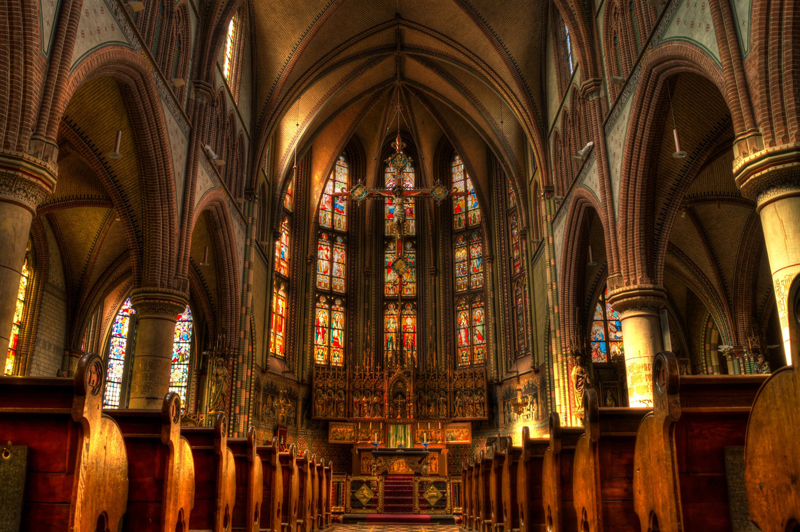The Most Holy Body and Blood of Christ

Celebrated: The Thursday following Trinity Sunday or (as in the United States) on the Sunday after the feast of the Trinity
Corpus Christi is latin and translated means “Body of Christ.”
 The feast of the Most Holy Body and Blood of Christ originated in the mid-thirteenth century in France and was expanded to include the whole church in 1264 by Pope Urban IV.
The feast of the Most Holy Body and Blood of Christ originated in the mid-thirteenth century in France and was expanded to include the whole church in 1264 by Pope Urban IV.When we celebrate the feast of Corpus Christi, we are called to focus on both manifestations of the Body of Christ - the Holy Eucharist and the Church. The main focus is, of course, the Eucharist.
As Catholic Christians the Eucharist is central in our celebration of Mass. Every time we gather for Mass we celebrate the Real Presence of Christ in the Eucharist and in our lives. The bread and wine are transformed through consecration, in a change called transubstantiation, into the body and blood of our Lord, Jesus Christ. When we partake in Communion we are not simply eating bread and drinking wine as a symbol of Christ’s body and blood; we are doing as he himself commanded us to do - eat his body and drink his blood.
Jesus said to them, "Amen, amen, I say to you, unless you eat the flesh of the Son of Man and drink his blood, you do not have life within you. Whoever eats my flesh and drinks my blood has eternal life, and I will raise him up on the last day. For my flesh is true food, and my blood is true drink." (John 6:53-56)
Our secondary focus of the Solemnity of the Most Holy Body and Blood of Christ centers around the Body of Christ present in the Church. We are the Church, therefore we are the Body of Christ. Jesus shares a very special communion with his disciples and he explains this with the vine and branches metaphor in John’s gospel.
"I am the true vine, and my Father is the vine grower. He takes away every branch in me that does not bear fruit, and everyone that does he prunes so that it bears more fruit.You are already pruned because of the word that I spoke to you. Remain in me, as I remain in you. Just as a branch cannot bear fruit on its own unless it remains on the vine, so neither can you unless you remain in me. I am the vine, you are the branches.” (John 15:1-5)
In Colossians 1:18, St. Paul tells us, “He is the head of the body, the church.” And he explains further in verse 24, “Now I rejoice in my sufferings for your sake, and in my flesh I am filling up what is lacking in the afflictions of Christ on behalf of his body, which is the church.”
Jesus is the head and we are the body. Jesus is the vine and we are the branches. This not only shows the unity of the Church, but also the diversity of the Church. We are all one with Jesus - one Church, one body - yet we are diverse and uniquely individual.
Oftentimes parishes will celebrate the Feast of Corpus Christi with public Eucharistic processions as a way of adoration and a sign of the faith that ties us together.
In the Presence of Our Lord by Fr. Benedict J. Groeschel -- Buy from Amazon
The Lamb's Supper: The Mass as Heaven on Earth by Scott Hahn -- Buy from Amazon
Peace in Christ,
© Melissa Knoblett-Aman
You Should Also Read:
Eucharist - The Real Presence
Eucharist – Early Christians and the Real Presence
Mass - Heaven on Earth

Related Articles
Editor's Picks Articles
Top Ten Articles
Previous Features
Site Map
Content copyright © 2023 by Melissa Knoblett-Aman. All rights reserved.
This content was written by Melissa Knoblett-Aman. If you wish to use this content in any manner, you need written permission. Contact Melissa Knoblett-Aman for details.


